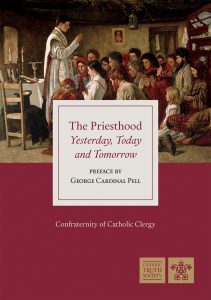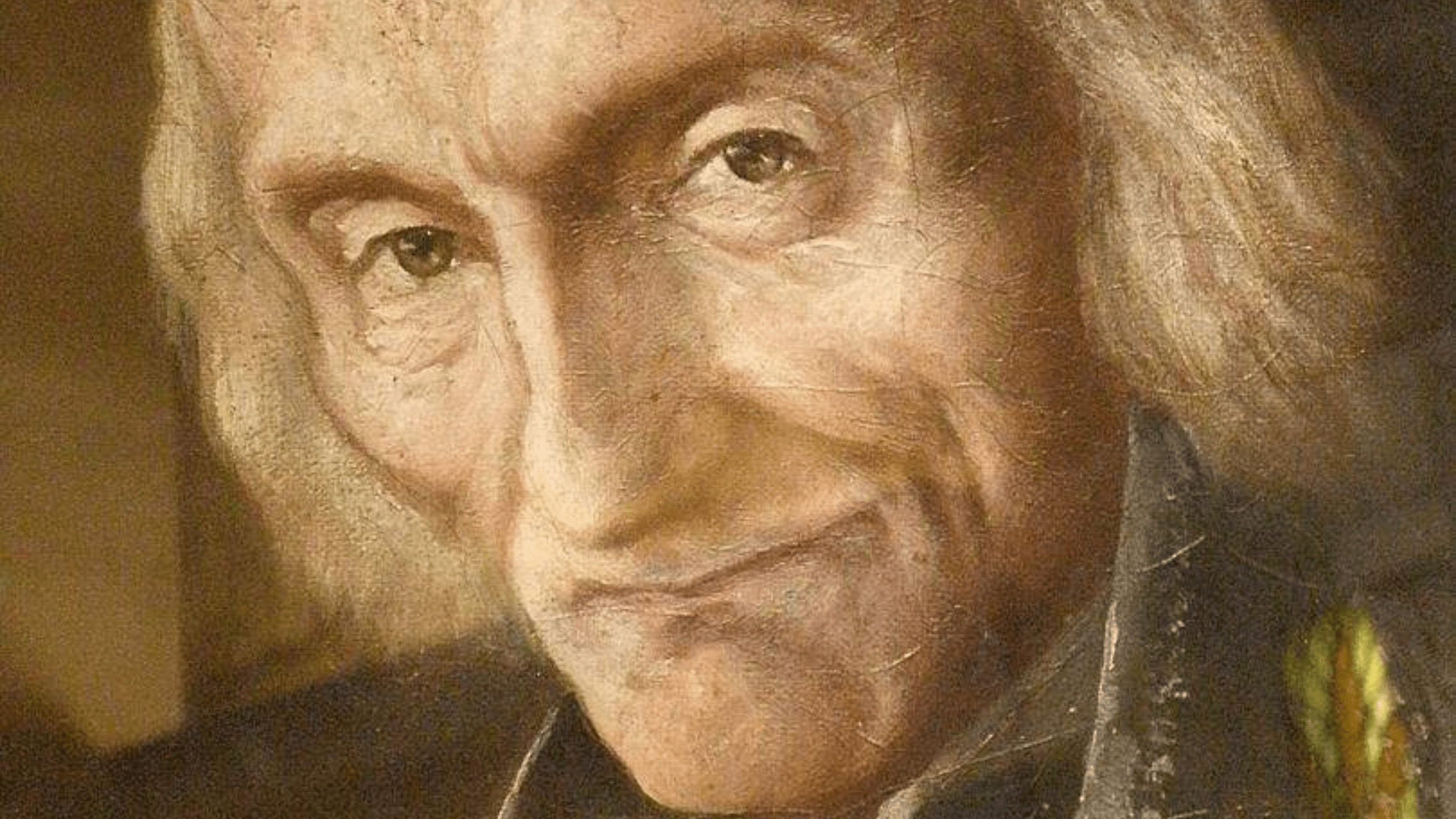In the long history of the Church, one priestly figure – a pastoral priest – has been uniquely raised up to exemplify the spiritual path every priest is to walk in his pastoral service. From the dawn of the twentieth century to the beginning of this twenty-first century, every pope has consciously turned our eyes to the witness of the Curé of Ars. No other saint has ever been so proposed to priests by successive popes as an “incomparable guide and unequalled model both for the carrying out of the ministry and of the holiness of the minister.”
The tiny village of Ars was significantly to become the scene not only of an exemplary ministry but also the beginning of a new evangelisation. The Saint of Ars not merely anticipated our mission in the de-Christianised societies of the West, he would in so many ways also anticipate the teaching of the Second Vatican Council. His witness exemplifies that priests are to seek holiness in the faithful carrying out of our ministry. We have no need of another path than the path we find in the daily life and ministry to which we are each called – no matter how unfruitful its prospects may seem.
We cannot fail to recall that John Vianney was a parish priest who constantly and unsuccessfully sought to flee from his parish responsibilities in order to embrace one of the strictest forms of monastic life. And we can be forever grateful to his bishop who so steadfastly refused these requests! A request which the Curé would make continuously until his last days in Ars. Yet, without ever knowing it himself, the parish priest of this tiny village in post-revolutionary France traced the path to holiness which every priest can follow.
St John Vianney was horrified to overhear his bishop describe him as “the holy Curé of Ars”. This was not how he saw himself, and his characteristic response was that he must have become a great actor! Such are the great saints. They do not see their sanctity, only their sinfulness and weakness, which led John Vianney to always refer to himself as “his poor self.” Yet, in his very poverty, the greatness of the Catholic priesthood would shine out, as did the specific path to holiness which every priest is called to walk.
John Vianney never doubted that he must strive to become a saint but saw the summit of holiness being found elsewhere than in his parish and the daily round of duties, which always began for him with prolonged prayer at the foot of the tabernacle. Perhaps the most disturbing aspect of all his witness for us priests is that the Curé of Ars genuinely believed any other priest could have done more in the parish than he did! This also helps to explain his recurring flights from Ars; these might otherwise appear a scandalous desire for the ease of retirement from a man who was needed so much in the thick of his ministry.
Yet the Curé had no doubt that the conversion of his parish was bound up with his own conversion and his daily struggle for holiness. As a pastor, he started by being attentive to his own sanctification in assiduous prayer and penance; in obedience and chastity; and in the simplifying his own life. Above all, drawing closer and closer each day to the Holy Eucharist. This was the foundation from which he sought to reach out to his indifferent and sometimes hostile parishioners. And this was the sure basis on which he was ready to respond to all who eventually came to this tiny parish in their hundreds of thousands. In this witness, we see how it is the saints who become the great evangelisers. And we see, in his example, the priority of interior life as the basis for all apostolic fruitfulness. It is an important lesson for us priests, that the new evangelisation of our parishes and the re- Christianisation of our societies begins with such attentiveness to our own conversion. In that wonderful little book The Soul of the Apostolate we are reminded that the true effectiveness of the apostolate depends on souls of prayer and, indeed, the author insists, Eucharistic souls. Yet Dom Chautard repeats a saying he does not wholly accept yet uses to disturb any sense of complacency. The saying goes, “A holy priest makes a fervent people; a fervent priest, a pious people; a pious priest, a fairly good people; a fairly good priest, a Godless people.” He goes on to cite the more balanced words of St Alphonsus that “The good morals and salvation of the people depend on good pastors… hence the proverb: like pastor like parish.” Attentive to our own salvation, we must never fail to recognise how so much depends on our personal striving for holiness and the priority we give to our own spiritual life.
The patron saint of parish priests was to reach the heights of holiness amid, rather than apart from, the ordinary routines and ever-growing demands of simply being a priest in a parish for four decades. Some of the early biographers of the Curé of Ars might not always have helped our understanding when they stressed only the exceptional and indeed fearful penances that John Vianney would himself later described as “youthful follies”. The early diet of boiled potatoes seems to have often captured imaginations, distracting from his faithful fulfilment of the daily duties of a priest that saw the pastoral virtue of patience lived to a heroic degree.
In his example, we see the daily, intercessory prayer on his knees; the exhausting hours spent in the confessional; the persevering catechesis and preaching which touched so many and impressed visiting theologians by its precision and understanding; his willingness to go to the assistance of his brother priests in all weathers and circumstances; his concern for the poor and most abandoned. We see in Ars a parish in which all participated in striving for holiness and apostolate, and in which the later teaching of Lumen gentium was so fully anticipated. We can only read in amazement at the pilgrimage of Ars which brought an estimated one-tenth to perhaps almost a quarter of the population of France to the door of this tiny church.
All this remarkable ministry and perseverance had one and the same foundation in the Eucharist. Asked how Ars had been converted, its Curé would simply point to the place where he prayed before the tabernacle. This same path is there to be found by every priest once we are ready to embrace our daily duty simply and fully in the light of the Eucharistic Sacrifice and in prolonged adoration of the Blessed Sacrament of the Altar.
During his 1986 pilgrimage to Ars, Pope John Paul told his brother priests that the example of the Curé of Ars invites each of us to a serious examination of conscience with regard to the care we take in preparing for and celebrating the Holy Mass and in our prayer before the Blessed Sacrament. Pope Benedict XVI’s observation regarding the whole life of the Church seems to apply in a special way to our own life and ministry when he said, “Every great reform has in some way be linked to the rediscovery of belief in the Lord’s Eucharistic presence among his people”. For there surely can never be an authentic renewal of the Catholic priesthood without such a daily rediscovery of the Lord’s Eucharistic presence at the altar and before the tabernacle.
From St John Vianney’s first, solitary Mass at a side altar in Grenoble to his last Mass in the overcrowded parish church of Ars, people recognised the beauty of seeing a priest who appeared in all simplicity entirely united to the prayer and offering of the Mass. The Curé’s most authoritative biographer describes him as being “An enemy to every form of affectation, he indulged in no exaggerated or useless gestures…his movements, his looks, his whole attitude [at the altar] expressed in turn the emotions of self-effacement, yearning, hope and love…his eyes raised, now lowered, pleading and contemplating expressed what took place in his soul.” The altar boys in the parish described what they saw more directly, when they expressed the general belief that their parish priest always saw Christ at the altar. I am sure this was no extraordinary, mystical manifestation. It was the experience of a priest who had quite simply accepted the faith, the call at his ordination: “to know what you are doing.”
 This blog is extracted from our book The Priesthood – Yesterday, Today and Tomorrow. Two bishops and three priests offer a series of brilliant insights into the Catholic priesthood – its past, present and future.
This blog is extracted from our book The Priesthood – Yesterday, Today and Tomorrow. Two bishops and three priests offer a series of brilliant insights into the Catholic priesthood – its past, present and future.
For more insights into the priesthood and to support the mission of CTS, order your copy of The Priesthood – Yesterday, Today and Tomorrow now.
